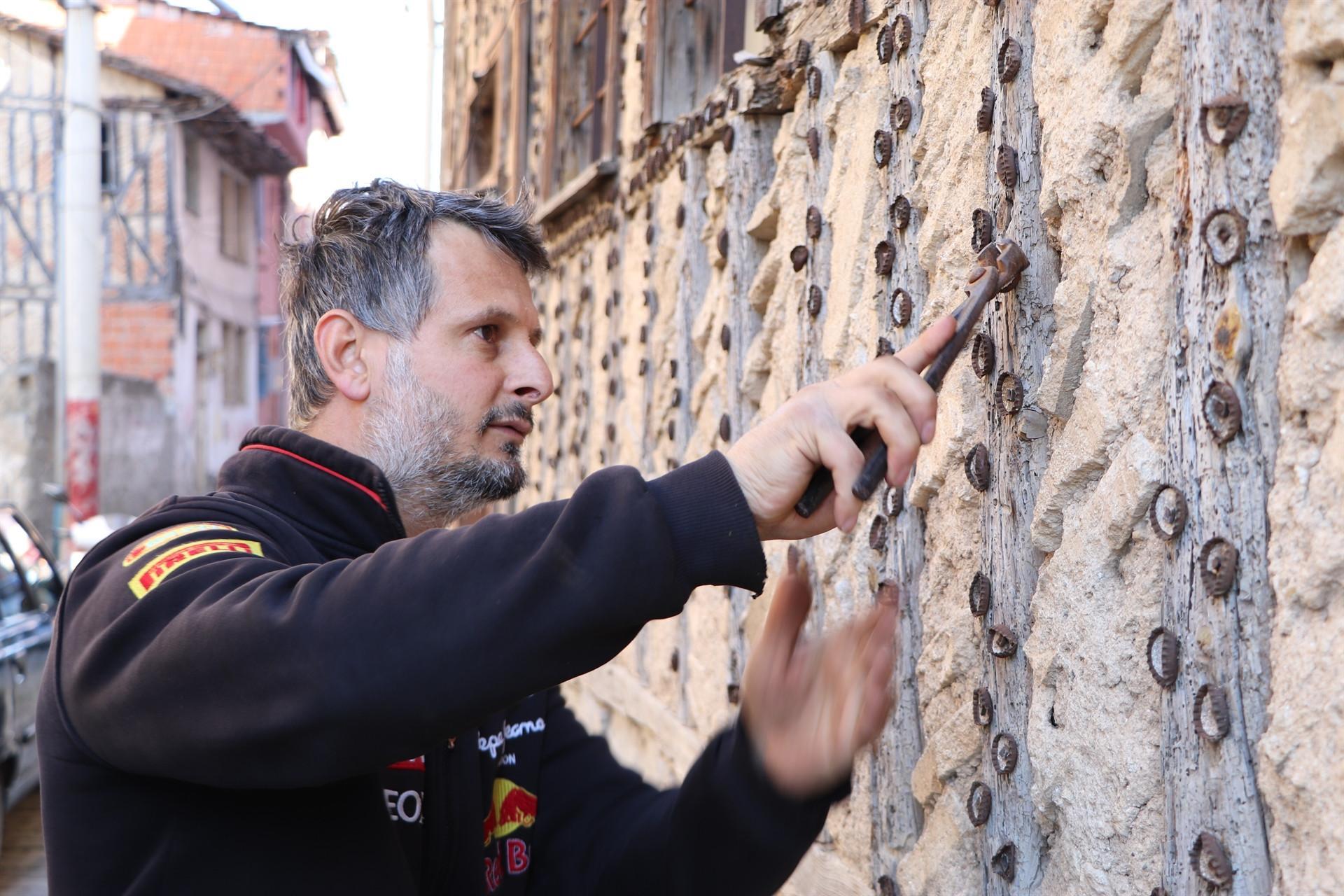
A 100-year-old house, whose exterior facade consists of Turkish soda bottle lids, has become one of the most visited spots of the Black Sea province of Samsun’s Vezirköprü district.
The house, which underwent extraordinary maintenance on its exterior to keep the plaster sturdy, is also drawing the interest of people as it exhibits antique items peculiar to the region with a rich history.
The two-story wooden building, which has a bay window and bears the traces of an old Turkish house architecture, was built by a man named Ethem Cömert, known as Sergeant Ethem during the 1920s.
Saying that the visitors who came to see the building could not hide their astonishment, the landlord Mustafa Cömert noted that the house was built by his grandfather and that he had preserved it since it was passed down to him.
Adding that the lids of the soda bottles were nailed to the walls, he explained that the plaster was prevented from falling off and that the exterior of the building was protected this way.
“My grandfather stuck these soda lids for preservation at first. However, when he saw that he liked it later and he left it like this,” Cömert said.
Cömert emphasized that the house has recently been flooded with visitors, despite the fact that the it has been in this state for many years.
“Those who see the outside of the house take pictures. The thing they are most curious about is the purpose of the soda lids. I tell them all one by one,” he said.
Cömert, who turned the house into a museum, stated that he paid special attention to the items left by his grandfather, and that he wanted to contribute to the district by buying the handicrafts and old items from the early Republican era.
He also exhibits dozens of works, from old rugs to the saddlebags, from millstones to barbecues, and hosts his guests in a traditional authentic environment unique to the region.
“My goal is to protect the family treasure and contribute to the promotion of the district with the values symbolizing Vezirköprü. We must protect our cultural values,” he noted.
Vezirköprü, where Turkish, Armenian and Greek communities lived together side by side before World War I, was attacked by irregular Greek gangs during the war and the district was damaged as a result of an armed struggle.
Vezirköprü, which was affected by the war even though it wasn’t a battlefield, was almost completely rebuilt with the Republic period.